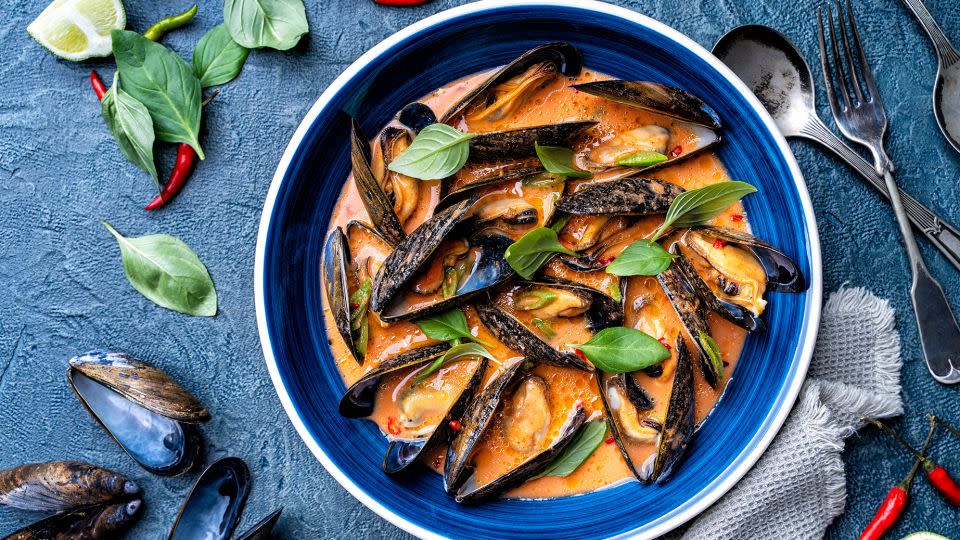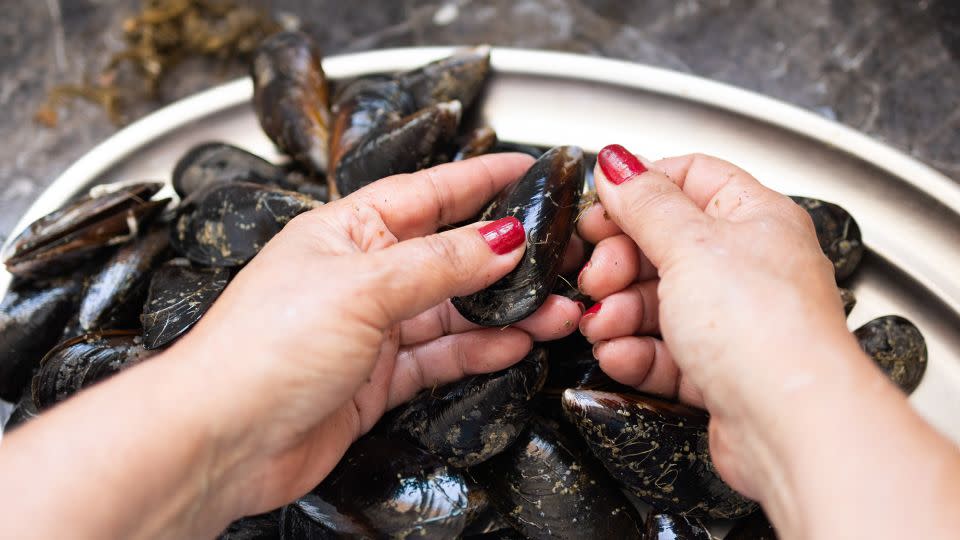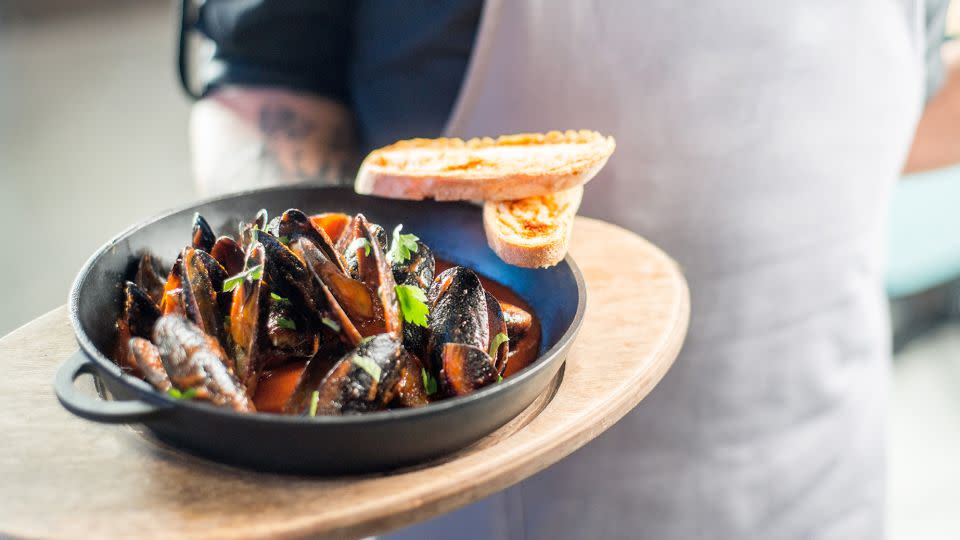‘Mussel’ up to a bowl of bivalves this fall
Sign up for CNN’s Eat, But Better: Mediterranean Style. Our eight-part guide shows you a delicious expert-backed eating lifestyle that will boost your health for life.
The adage of only eating oysters in months that end in R no longer holds true as advances in aquaculture have made farmed shellfish available and safe to eat year-round. However, in the case of mussels, fall is an ideal time to indulge in these succulent bivalves.
That’s because mussels reach their point of maturation later in the year, after spring and summer spawning, so you’ll get the plumpest and most flavorful ones as the weather gets cooler.
Mussels are a low-fat, low-calorie source of protein, and they are rich in omega-3 fatty acids. “Think about it this way: Mussels take about as long to cook as a hot dog but have more than two times more protein as well as a diverse array of micronutrients,” said Joshua Stoll, associate professor at the University of Maine’s school of marine sciences and cofounder of the Local Catch Network.

Not only are farmed mussels affordable and widely available — they’re also a sustainable seafood choice. “Mussels are filter feeders, so they actually help keep the environment healthy,” removing impurities from the water surrounding them, Stoll said. Mussels also produce significantly fewer greenhouse gas emissions than other farmed protein sources such as beef, lamb and pork, according to a recent study.
If you’ve only ever slurped up a bowl of mussels at a restaurant, now’s the time to make them at home. Here’s how to get your fill this fall.
How to prepare mussels
Remember that mussels are alive until you cook them, and they need to stay alive and breathing until they’re ready to hit the pan. To keep them in this state, even if you’ll be eating the mussels within a few hours, immediately remove them from any bags they were packaged in.
You don’t have to store your mussels on ice, but you do need to keep them cold until you’re ready to prep them. My favorite method is to pour the mussels carefully into a large colander, then to nest that colander inside a large bowl. This keeps the mussels cool but not submerged in any water since that will kill them. Cover the mussels loosely with a damp dish towel, then refrigerate up to 24 hours.
Bagged mussels have already undergone a cursory cleaning before you pick them up at the seafood counter, but a good scrub is still necessary to remove any remaining grit. I swear this is the most difficult part of making mussels at home, and it really doesn’t take that long.

One at a time, scrub the mussels gently with a vegetable brush or an old toothbrush under cool running water, then transfer to a colander to let excess water drip away. Each mussel shell should be tightly closed. If you find one with an open shell, gently tap it against the counter or the side of the sink. If it doesn’t close within a few minutes, discard it — that mussel is already dead. If you find any mussels with cracked shells, discard them immediately.
You may also notice a bit of grassy fuzz sticking out of the lip where the two shells of the mussel meet. This is the beard, and it’s easy to remove. Just grab the threads and pull, yanking the beard out from between the shells. Don’t worry if a few small bits remain — it’s an edible part of the bivalve.
If you won’t be cooking and eating your mussels immediately, use the colander method as noted above to store the mussels until you’re ready to use them.
How to cook mussels
Unlike oysters, which take a bit of practice and skill to shuck, it’s simple to steam mussels. In fact, you could do it with plain water, and they’d be cooked. But what’s the fun in eating mussels without added flavor?
That’s where the fun comes in. The following basic ratio can be adjusted with various ingredients to change up the flavor profile of your mussels every single time you make them. (Note: This technique also works for clams as well as it does for mussels. Make a double batch with both bivalves if you’re up for it.)
Per 2-pound bag of mussels, you’ll need:
• About 2 tablespoons fat for sautéing, typically olive oil or butter
• A handful of aromatics, such as garlic or garlic scapes, shallots, onions or leeks. These alliums vary in intensity, so go with your personal preference. I typically use no more than 1/4 cup minced aromatics in my pot.
• Liquid for steaming. About 1 cup will give you a nice amount of broth for dunking crusty bread or fries. White wine and broth are popular choices, as are beer or cider.

To cook: Heat the olive oil or butter in a large Dutch oven or other heavy-bottomed pot over medium-low heat. Add the aromatics and cook for 3-4 minutes until they start to soften, then pour in the liquid, increase the heat to medium and bring to a simmer.
Add the cleaned mussels, cover the pot and cook for about 8-10 minutes until all the mussels have opened. If there are a few mussels that just won’t open, discard them or risk food poisoning. (Seriously, don’t eat them.)
Serve with slices of toasted crusty bread, make your own crispy fries or bake up a bag of frozen taters. No judgment here.
Mix up your flavorings
Now that you have the basic technique for steaming mussels down pat, it’s time to experiment. Try any of these recipes or go off-book and make up your own favorite mussel meal.
• Mussels in tomato-garlic broth
• Spanish mussels with hard chorizo and cream
• Beer-steamed mussels
• White wine and olive oil-steamed mussels
• Mussels in coconut milk
Casey Barber is a food writer, artist and editor of the website Good Food Stories.
For more CNN news and newsletters create an account at CNN.com

